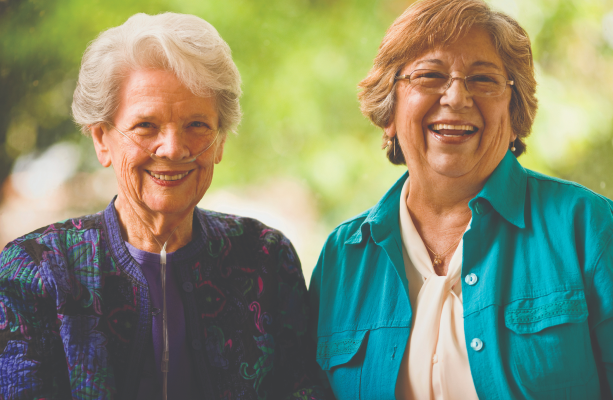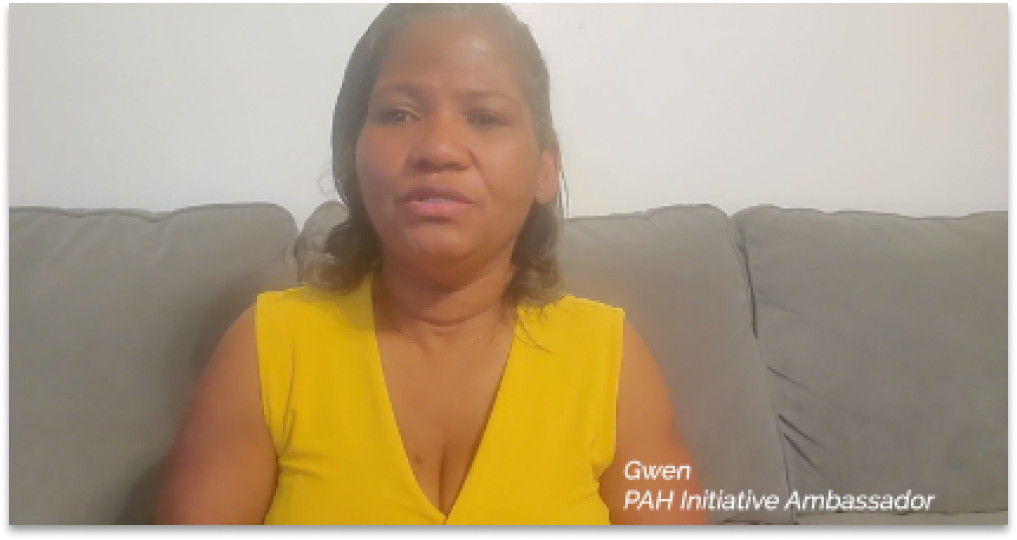
For some who have been diagnosed with PAH, oxygen therapy can be a helpful addition to a treatment plan. But using oxygen often requires some adjustments as well to help integrate it into daily life.
Like a lot of changes that come with PAH, there are mental adjustments that can help in coming to terms with the equipment. Your perspective is important in determining whether you view your oxygen equipment as a burden or as a helpful tool.
It’s natural for some people to feel frustrated or self-conscious by the addition of oxygen equipment in their daily lives. You may feel like you stick out or you might be worried about how others perceive you. Over time, it can start to feel like just one more thing to manage on top of everything else that comes with PAH. Not only does using oxygen equipment bring physical challenges and time commitments, but it can also be a constant reminder of PAH.
It can be helpful to reflect on the benefits of oxygen therapy. Using oxygen might make someone’s world feel a lot bigger because it can help them improve their ability to do daily activities and allow them to participate in special occasions, like going on a trip or going out with friends. One poll of people living with PAH found that the majority considered oxygen therapy to bean essential part of improving the way they feel every day.
It can also help to remember that oxygen may not be needed forever. With effective treatment and lifestyle changes, some PAH patients might see an improvement in their condition, which could help them to reduce or even stop oxygen therapy eventually. Patients should not adjust or stop their oxygen therapy without consulting their doctor, though.
Many people might feel embarrassed or uncomfortable talking about their oxygen with others at first, especially in public. While this feeling is entirely natural, a slight shift in your perspective may help you embrace your new accessories.
Having a plan for discussing oxygen with others can help you feel more comfortable opening up about it. It might also be helpful to practice these discussions beforehand. Even though you may feel silly, practicing can help you to feel more prepared if someone asks you a question.
When the time comes to have these discussions, if you’re comfortable doing so, start by briefly describing what PAH is and how your oxygen therapy helps. Some people also like to share how their equipment works—these machines are pretty incredible, after all!
Try to remember you don’t need to feel embarrassed about having PAH. Many people have illnesses that aren’t visible to others on the surface. You’re not alone.
Also, try not to dwell on your oxygen concentrator or be self-conscious. Remember that others around you are busy with their own lives and most likely won’t even notice your oxygen equipment as much as you might expect.
The challenges that come with oxygen therapy are very real, and you’re not alone if you feel frustrated. To help maintain a positive perspective about your oxygen, just remember how it is helping you every day.
PAH is a complicated disease that can be difficult to understand. We’ve broken it down for you with easy-to-understand information, simple graphics, and informative videos from a PAH specialist.
What is PAH?
Learn how Peggy renewed her competitive spirit after her PAH diagnosis and how she won't let an oxygen tank define her.
Competitive Spirit with PAH ⟩
How has knowing their risk status helped Lauren and Karen better understand if their treatment plan is working?
Knowing your PAH Risk Status ⟩
Living with PAH can be a big adjustment and taking care of yourself can make a big difference. But where do you start?
Self-Care and Healthy Living ⟩